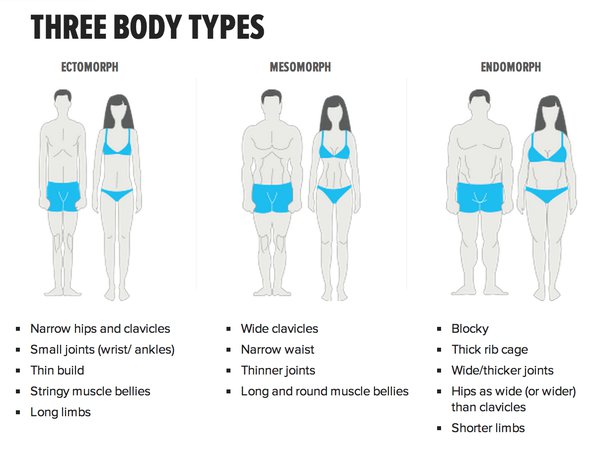Sports that utilize a trampoline include gymnastics and trampolining. Trampolining is a sport that involves performing acrobatic moves and routines on a trampoline, while gymnastics incorporates trampoline routines as a component of the overall sport.
These sports require athletes to demonstrate precision, coordination, and athleticism as they perform flips, twists, and other aerial maneuvers on the trampoline. Trampolining and trampoline gymnastics have gained popularity worldwide, with national and international competitions showcasing the skills and talents of athletes in this exhilarating discipline.
The use of a trampoline adds an extra element of thrill and excitement to these sports, making them visually captivating and highly enjoyable for both participants and spectators. Whether it’s the awe-inspiring flips or the incredible airtime, trampoline-based sports provide a unique and breathtaking experience for athletes and enthusiasts alike.

Credit: www.walmart.com
Trampoline Gymnastics
Trampoline gymnastics is an exciting and dynamic sport that takes the art of bouncing to new heights. Combining the athleticism of gymnastics with the thrilling sensation of soaring through the air, trampoline gymnastics is a captivating sport that leaves spectators in awe.
Overview Of Trampoline Gymnastics
Trampoline gymnastics is a discipline that involves performing acrobatic and artistic movements on a trampoline. The trampoline, a resilient fabric sheet supported by springs, catapults gymnasts into the air with remarkable force. It provides them with the perfect platform to demonstrate their incredible strength, flexibility, and control.
The sport of trampoline gymnastics is divided into two distinct events: individual trampoline and synchronized trampoline. In individual trampoline, athletes showcase their skills through a series of flips, twists, and somersaults, all while maintaining perfect form and control. Synchronized trampoline, on the other hand, involves two athletes performing mirroring routines side by side, requiring impeccable timing and synchronization.
Skills And Techniques In Trampoline Gymnastics
Trampoline gymnastics demands a combination of power, precision, and grace. Athletes need to develop a wide range of skills and techniques to excel in this sport. Here are some of the fundamental elements:
- Body positioning: Gymnasts must maintain a tight body position, with arms and legs fully extended, throughout their movements. This allows for better control and increased rotational speed.
- Air awareness: Knowing where they are in relation to the trampoline bed is crucial for gymnasts to execute their routines successfully. This skill, known as air awareness, allows them to adjust their movements mid-air and land safely.
- Locked rotations: Gymnasts must master the technique of “locking” their rotations, which involves efficiently executing their flips or twists while maintaining a controlled and solid body position. This technique ensures smooth and precise movements.
- Bouncing technique: Understanding the mechanics of the trampoline and utilizing proper bouncing technique is essential. Athletes need to strike a balance between generating enough force to gain height and maintaining stability throughout their routines.
Competitions And Events In Trampoline Gymnastics
Trampoline gymnastics has its own array of competitions and events where athletes can showcase their exceptional skills and entertain audiences around the world. Some of the most prestigious events include:
- Olympic Games: Trampoline gymnastics became an Olympic sport in the year 2000, and since then, it has been a highlight of the Games. Athletes from various countries compete for gold, performing awe-inspiring routines that push the limits of the human body.
- World Championships: Every year, the International Gymnastics Federation (FIG) organizes the Trampoline Gymnastics World Championships. This global event attracts top gymnasts, who compete in both individual and synchronized trampoline events to claim the title of world champion.
- National competitions: Trampoline gymnasts also participate in national competitions held in their respective countries. These events serve as a platform for athletes to showcase their skills, earn recognition, and secure a spot in international competitions.
Trampoline gymnastics continues to captivate audiences with its combination of athleticism, precision, and artistry. Whether it’s watching the grace of a perfectly executed somersault or the awe-inspiring flips and twists, this sport never fails to impress. So, next time you see a trampoline gymnast soaring through the air, take a moment to appreciate the incredible dedication and skill required to master this gravity-defying art.

Credit: www.healthline.com
Acrobatic Trampoline
When it comes to sports that use a trampoline, one form stands out for its sheer excitement and display of skill – acrobatic trampoline. This high-flying discipline takes trampoline bouncing to a whole new level, combining it with breathtaking acrobatic maneuvers. With the trampoline as their stage, athletes defy gravity, performing flips, twists, and turns that leave spectators in awe. The art of acrobatic trampoline requires precision, strength, and incredible body control, making it a truly captivating form of entertainment.
The Art Of Acrobatic Trampoline
Acrobatic trampoline is an exhilarating sport that showcases the remarkable athleticism and creativity of its performers. Combining the power of a trampoline with acrobatic skills, athletes push the boundaries of what is physically possible. With every jump and twist, they showcase a unique blend of grace, strength, and precision. Acrobatic trampoline takes years of training and dedication to master, as performers strive to perfect their technique and create show-stopping routines.
Different Acrobatic Moves On A Trampoline
Acrobatic trampoline offers a wide variety of impressive and gravity-defying moves. Here are some of the most common ones:
| Move | Description |
|---|---|
| Front somersault | A forward flip in mid-air, rotating forwards along the longitudinal axis. |
| Back somersault | A backward flip in mid-air, rotating backwards along the longitudinal axis. |
| Twisting somersault | A flip with a twist, combining rotational and flipping movements. |
| Pike jump | A jump where the body is bent at the hips, with the legs straight and close together. |
| Tuck jump | A jump where both the knees and hips are flexed, bringing the knees close to the chest. |
These are just a few examples of the incredible acrobatic moves that can be performed on a trampoline. Athletes constantly push the limits, showcasing their skills in creative and awe-inspiring ways. From double flips to multiple twists in a single jump, the possibilities are endless.
Trampoline Shows And Performances
Acrobatic trampoline is not only seen in competitive sports but also in thrilling shows and performances. These captivating spectacles feature a combination of acrobatic skills, visual effects, and music, creating an immersive experience for the audience. Trampoline shows often include synchronized routines, group performances, and daring stunts that leave spectators on the edge of their seats. Whether it’s a live event or a televised performance, acrobatic trampoline shows never fail to entertain and captivate viewers of all ages.
Rebound Therapy
Rebound Therapy is a sports activity that utilizes a trampoline to provide therapeutic benefits such as improving coordination, balance, and strength. It is an engaging and enjoyable way to stay active while reaping the physical and mental advantages of bouncing on a trampoline.
Understanding Rebound Therapy
Rebound therapy is a specialized form of therapy that utilizes trampolines to benefit individuals with disabilities. It involves controlled, safe movements on a trampoline, which helps to develop and promote physical, psychological, and social well-being. The therapy takes advantage of the trampoline’s unique properties, such as its ability to provide a soft landing and cushioned bounce, making it a suitable and enjoyable option for individuals with different abilities.
Benefits And Applications Of Rebound Therapy
Rebound therapy offers a wide range of benefits for individuals of all ages and abilities. The therapeutic use of trampolines can be particularly beneficial for those with physical disabilities, sensory impairments, and learning difficulties. Here are some key benefits and applications of rebound therapy, emphasizing its positive impact:
- Physical Benefits: Rebound therapy helps in improving coordination, balance, and strength. The controlled bouncing movements stimulate muscles, bones, and joints, promoting overall physical fitness and enhancing gross motor skills.
- Psychological Benefits: The rhythmic bouncing motion on a trampoline can have a positive effect on mental well-being. It improves mood, reduces anxiety and stress, and promotes relaxation. The therapy also assists in developing concentration, focus, and sensory integration.
- Social Benefits: Participating in rebound therapy sessions can foster social interactions and develop communication skills. It provides individuals with a shared activity and promotes a sense of inclusion and belonging within a supportive group environment.
- Therapeutic Applications: Rebound therapy has diverse therapeutic applications. It can be used to support rehabilitation after an injury or surgery, aid in managing chronic conditions such as cerebral palsy or muscular dystrophy, and improve mobility and body awareness in individuals with autism spectrum disorder or sensory processing disorders.
Rebound Therapy For Individuals With Disabilities
Rebound therapy has proven to be a highly effective form of therapy for individuals with disabilities. Its unique properties make it a safe and enjoyable activity that can be adapted to suit a wide range of needs and abilities. Trained professionals, such as physiotherapists and occupational therapists, oversee and tailor the therapy sessions to ensure optimum benefits.
Trampolines used in rebound therapy are equipped with safety features like handrails and harnesses, providing additional support and security. The therapist carefully plans and selects appropriate exercises and movements to address specific areas of therapy, focusing on individual goals and needs. Sessions may include a variety of activities such as stretching, bouncing, and related exercises to target different skills and abilities.
In conclusion, rebound therapy offers a unique and effective approach to promote physical, psychological, and social well-being for individuals with disabilities. By harnessing the therapeutic benefits of trampolines, it opens doors to new possibilities and enhances the quality of life for those who participate in this specialized therapy.

Credit: www.amazon.com
Can Bungee Cord Sports Incorporate Trampolines for Extra Thrills and Fitness Benefits?
Combining trampolines with sports that involve bungee cord activities could create a dynamic fusion of adrenaline and well-rounded fitness. The trampoline’s bounce enhances agility, while the bungee cord adds resistance and freedom for creative, aerial moves. This innovative pairing promises exhilarating fun and an engaging workout experience like no other.
Frequently Asked Questions On Sports That Use A Trampoline
What Are Some Sports That Use A Trampoline?
Trampolining, gymnastics, and acrobatics are popular sports that utilize trampolines. These sports require skill, coordination, and an understanding of how to properly execute jumps and flips on a trampoline surface.
How Does Trampolining Benefit Athletes?
Trampolining helps athletes improve their balance, core strength, and overall coordination. It also enhances their spatial awareness and proprioception, which are crucial skills for various sports. Furthermore, trampolining provides a low-impact workout that reduces the risk of joint injuries.
Can Trampoline Sports Be Dangerous?
While trampolining can be a safe sport when proper safety precautions are followed, there is still a risk of injury. Athletes should always use safety equipment, practice under supervision, and adhere to proper jumping techniques to minimize the risk of accidents.
Conclusion
Trampolines have revolutionized the world of sports, offering athletes a thrilling and dynamic platform to showcase their skills and creativity. From high-flying acrobatics in gymnastics and dazzling routines in trampoline diving, to intense slam dunks in basketball and gravity-defying stunts in freestyle skiing and snowboarding, these sports have completely changed the game.
With its rising popularity and endless possibilities, it’s safe to say that trampoline sports are here to stay, captivating audiences and inspiring individuals to push their limits in exhilarating ways. So whether you’re a professional athlete or simply an enthusiast, get ready to take your sporting experience to new heights with the wonders of trampoline sports.



